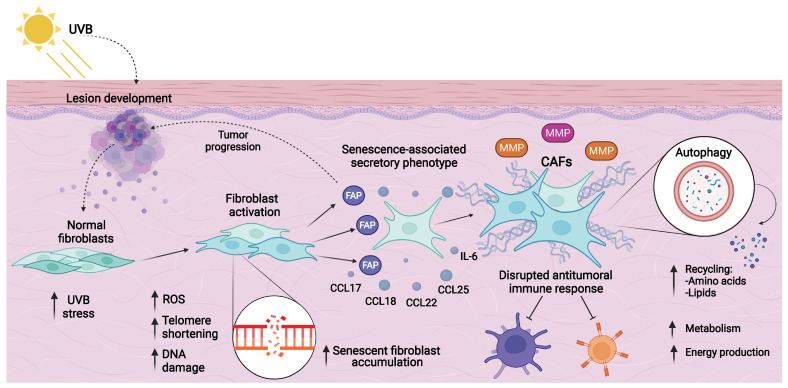Figure 3.
Fibroblast transformation to cancer-associated fibroblasts (CAFs) and their implication in the tumor microenvironment. Several elements and sequential phases are involved in the activation and transformation of fibroblasts into CAFs. CAFs acquire a distinct phenotype denominated as the senescence-associated secretory phenotype (SASP), which favors the accumulation of senescent cells. Fibroblast activation protein (FAP) is a key marker of fibroblast activation. Higher expression of matrix metallopeptidases promotes the establishment and progression of neoplasms, through extracellular matrix degradation, as previously mentioned. DNA damage due to UVB radiation is also a cause of fibroblast DNA integrity disruption, telomere shortening, and reactive oxygen species (ROS) production. Altered expression of immune system molecules, such as cytokines and chemokines, can interrupt the local antitumoral response and maintain this CAF activation process. In addition, autophagy produces amino acids and lipids fragments that provide energy sources to preserve an indispensable activated metabolism for cell transformation and migration. The present figure was created with BioRender.com, accessed on 4 May 2022. All icons, templates, and other original artwork appearing in the attached completed graphic are pursuant to BioRender’s Academic License Terms.

